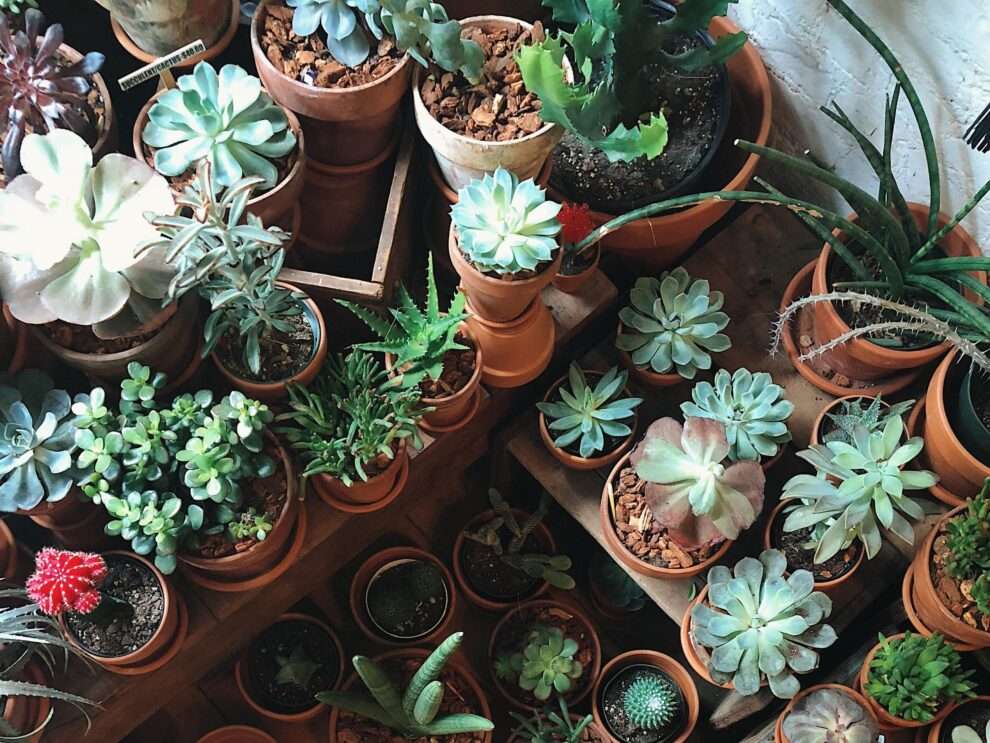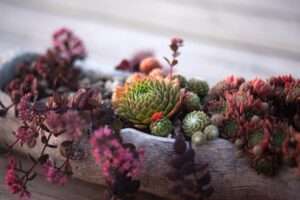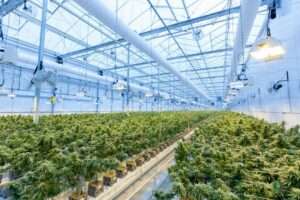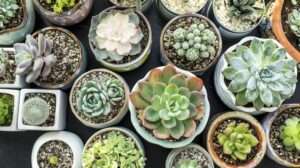Ecology is the study of how organisms interact with each other and their environment. It is a field that encompasses a wide range of topics, from the behavior of individual organisms to the dynamics of entire ecosystems. Understanding ecology is important for several reasons. Firstly, it allows us to better understand the natural world and our place in it. By studying ecology, we can gain insights into how ecosystems function and how different species interact with each other and their environment.
Secondly, understanding ecology is crucial for our personal well-being. By understanding the ecological processes that underpin the health of ecosystems, we can make informed decisions about how to protect and conserve them. This includes making choices about our own consumption habits, such as reducing waste and choosing sustainable products. Additionally, understanding ecology can help us appreciate the beauty and diversity of the natural world, which has been shown to have positive effects on mental health and well-being.
Finally, understanding ecology is important for global well-being. Ecosystems provide a wide range of services that are essential for human survival and prosperity, such as clean air and water, fertile soil for agriculture, and climate regulation. By understanding how ecosystems function and the threats they face, we can work towards sustainable solutions that ensure these services are maintained for future generations.
The Basics of Ecology: Key Concepts and Terms
Ecology is the scientific study of how organisms interact with each other and their environment. It encompasses a wide range of topics, from the behavior of individual organisms to the dynamics of entire ecosystems. The scope of ecology is vast, as it seeks to understand the complex web of interactions that occur within and between different levels of biological organization.
Some key concepts and terms in ecology include:
– Ecosystem: An ecosystem is a community of organisms interacting with each other and their physical environment. It includes both living (biotic) and non-living (abiotic) components, such as plants, animals, soil, water, and air.
– Population: A population is a group of individuals of the same species living in the same area and interacting with each other. Population ecology focuses on understanding the factors that influence population size, growth, and distribution.
– Community: A community is a group of populations of different species living in the same area and interacting with each other. Community ecology seeks to understand the patterns of species diversity and the interactions between different species within a community.
– Habitat: A habitat is the specific environment in which an organism lives. It provides the necessary resources and conditions for the survival and reproduction of that organism.
– Niche: A niche refers to the role or function that an organism plays within its ecosystem. It includes the resources it uses, the interactions it has with other organisms, and its response to environmental conditions.
The Levels of Ecology: From Organisms to Ecosystems
Ecology can be studied at different levels of biological organization, from individual organisms to entire ecosystems. Each level provides a unique perspective on how organisms interact with their environment and how these interactions shape ecological processes.
At the individual level, ecologists study how individual organisms respond to their environment and how they interact with other individuals. This includes studying behaviors such as feeding, mating, and territoriality. It also involves understanding how individual organisms adapt to their environment through physiological and morphological traits.
At the population level, ecologists study how populations of organisms change over time. This includes studying factors such as birth rates, death rates, immigration, and emigration. Population ecology also examines how populations respond to changes in their environment, such as changes in resource availability or the presence of predators.
At the community level, ecologists study how different species interact with each other within a given area. This includes studying patterns of species diversity, such as species richness (the number of species present) and species evenness (the relative abundance of different species). Community ecology also examines the interactions between different species, such as predation, competition, and mutualism.
At the ecosystem level, ecologists study how energy and nutrients flow through an ecosystem. This includes studying processes such as photosynthesis, respiration, and decomposition. Ecosystem ecology also examines how different ecosystems are interconnected and how they respond to disturbances, such as natural disasters or human activities.
These different levels of ecology are interconnected and influence each other. For example, changes in the behavior or physiology of individual organisms can have cascading effects on populations and communities. Similarly, changes in the composition or structure of communities can have profound effects on ecosystem processes.
Biodiversity: Why it Matters and How to Protect it
Biodiversity refers to the variety of life on Earth, including the diversity of species, genes, and ecosystems. It is a fundamental aspect of ecological systems and plays a crucial role in maintaining ecosystem health and functioning.
Biodiversity is important for several reasons. Firstly, it provides a wide range of ecosystem services that are essential for human well-being. These include the provision of food, clean water, clean air, and fertile soil for agriculture. Biodiversity also plays a key role in regulating climate, preventing soil erosion, and purifying water.
Secondly, biodiversity is important for its intrinsic value. Each species has its own unique set of traits and adaptations that have evolved over millions of years. Losing a species means losing a unique piece of Earth’s history and evolutionary potential.
Unfortunately, biodiversity is under threat from a range of human activities. Habitat destruction, pollution, climate change, invasive species, and overexploitation are all major drivers of biodiversity loss. In order to protect biodiversity, conservation efforts are needed at multiple levels.
At the local level, efforts can be made to protect and restore habitats that are important for biodiversity. This can include creating protected areas, such as national parks and nature reserves, and implementing sustainable land management practices.
At the global level, international agreements and policies are needed to address the drivers of biodiversity loss. For example, the Convention on Biological Diversity (CBD) is an international treaty that aims to conserve biodiversity, promote sustainable use of its components, and ensure the fair and equitable sharing of benefits arising from the use of genetic resources.
Individuals can also play a role in protecting biodiversity by making conscious choices in their daily lives. This can include supporting local farmers and businesses that use sustainable practices, reducing waste and consumption, and advocating for stronger environmental policies.
Climate Change: Causes, Impacts, and Solutions
Climate change refers to long-term changes in temperature, precipitation patterns, wind patterns, and other aspects of the Earth’s climate system. It is primarily caused by human activities, particularly the burning of fossil fuels such as coal, oil, and natural gas.
Climate change has a wide range of impacts on both natural systems and human societies. These include rising temperatures, changing rainfall patterns, melting glaciers and polar ice caps, rising sea levels, and increased frequency and intensity of extreme weather events such as hurricanes and droughts.
One of the most significant impacts of climate change is on ecosystems and biodiversity. Many species are already experiencing shifts in their geographic ranges and changes in their phenology (the timing of key life cycle events such as breeding or migration). Some species may be able to adapt to these changes, but others may face extinction if they are unable to keep pace with the rate of change.
In order to mitigate the impacts of climate change and adapt to its effects, a range of solutions are needed. One key solution is to reduce greenhouse gas emissions by transitioning to renewable energy sources such as solar and wind power. This can be done at both the individual level (by installing solar panels or driving electric vehicles) and at the societal level (by implementing policies that promote renewable energy and reduce reliance on fossil fuels).
Another key solution is to promote sustainable land management practices that sequester carbon and enhance the resilience of ecosystems. This can include reforestation, afforestation, and the restoration of degraded ecosystems.
Finally, adaptation strategies are needed to help communities and ecosystems cope with the impacts of climate change that are already occurring or are inevitable. This can include measures such as building flood defenses, implementing water conservation measures, and developing climate-resilient agricultural practices.
Pollution: Types, Sources, and Effects on the Environment
Pollution refers to the introduction of harmful substances or contaminants into the environment. It can occur in various forms, including air pollution, water pollution, soil pollution, and noise pollution. Pollution has a wide range of negative effects on both the environment and human health.
Air pollution is caused by the release of pollutants into the atmosphere, such as carbon dioxide, nitrogen oxides, sulfur dioxide, and particulate matter. It is primarily caused by human activities such as burning fossil fuels for energy production and transportation. Air pollution can have a range of negative effects on human health, including respiratory problems, cardiovascular disease, and increased risk of cancer.
Water pollution occurs when pollutants are discharged into bodies of water such as rivers, lakes, and oceans. Common sources of water pollution include industrial waste, agricultural runoff, sewage discharge, and oil spills. Water pollution can have a range of negative effects on aquatic ecosystems, including reduced biodiversity, eutrophication (excessive nutrient enrichment), and the spread of harmful algal blooms.
Soil pollution occurs when pollutants are released into the soil through activities such as industrial waste disposal, agricultural practices (such as the use of pesticides and fertilizers), and improper waste management. Soil pollution can have a range of negative effects on soil fertility, plant growth, and ecosystem functioning.
Noise pollution refers to excessive or unwanted sound that can have negative effects on human health and well-being. It is primarily caused by human activities such as transportation, industrial processes, and construction. Noise pollution can lead to stress, sleep disturbances, hearing loss, and other health problems.
In order to reduce pollution and its negative effects, a range of strategies are needed. These include implementing stricter regulations and standards for pollutant emissions, promoting cleaner technologies and practices, and raising awareness about the importance of pollution prevention.
Sustainable Living: Tips for Reducing Your Ecological Footprint
Sustainable living refers to a lifestyle that seeks to minimize one’s impact on the environment and promote ecological sustainability. It involves making conscious choices in our daily lives that reduce our ecological footprint – the amount of resources we consume and waste we produce.
There are many ways in which individuals can reduce their ecological footprint and live more sustainably. Some practical tips include:
– Conserving energy: This can be done by turning off lights and appliances when not in use, using energy-efficient light bulbs and appliances, and insulating homes to reduce heating and cooling needs.
– Conserving water: This can be done by fixing leaks, using water-efficient appliances and fixtures, and practicing water-saving habits such as taking shorter showers and watering plants in the early morning or late evening.
– Reducing waste: This can be done by recycling, composting organic waste, and avoiding single-use items such as plastic bags and disposable water bottles. It also involves making conscious choices about the products we buy, such as choosing products with minimal packaging or buying second-hand items.
– Choosing sustainable transportation: This can be done by walking, biking, or using public transportation whenever possible. When driving is necessary, choosing fuel-efficient vehicles or carpooling can help reduce emissions.
– Eating sustainably: This can be done by choosing locally sourced, organic, and seasonal foods. It also involves reducing meat consumption, as animal agriculture is a major contributor to greenhouse gas emissions and deforestation.
– Supporting sustainable businesses: This can be done by choosing products and services from companies that prioritize sustainability and social responsibility. This can include supporting local farmers and businesses that use sustainable practices, and avoiding products that are produced using environmentally harmful practices.
By making these small changes in our daily lives, we can collectively make a big difference in reducing our ecological footprint and promoting a more sustainable future.
Conservation: Strategies for Protecting Endangered Species and Habitats
Conservation refers to the protection, management, and restoration of natural resources, including endangered species and their habitats. It is an important field of study and practice that aims to maintain biodiversity, ecosystem services, and the overall health of the planet.
There are many strategies that can be used to protect endangered species and their habitats. Some key strategies include:
– Creating protected areas: This involves setting aside land or water areas that are important for biodiversity conservation. Protected areas can range from small nature reserves to large national parks. They provide a safe haven for endangered species and help preserve their habitats.
– Restoring degraded habitats: This involves restoring ecosystems that have been damaged or destroyed by human activities. Restoration efforts can include reforestation, wetland restoration, and the removal of invasive species.
– Implementing sustainable land management practices: This involves promoting land management practices that minimize negative impacts on biodiversity and ecosystem services. This can include sustainable agriculture practices, such as organic farming and agroforestry, as well as sustainable forestry practices.
– Combating illegal wildlife trade: Illegal wildlife trade is a major driver of biodiversity loss, particularly for species such as elephants, rhinos, and tigers. Efforts to combat illegal wildlife trade include strengthening law enforcement, raising awareness about the impacts of wildlife trade, and supporting local communities in finding alternative livelihoods.
– Engaging local communities: Local communities play a crucial role in conservation efforts, as they often have a deep knowledge of the local environment and can provide valuable insights and support. Engaging local communities in conservation efforts can include providing training and education, supporting sustainable livelihoods, and involving them in decision-making processes.
– Promoting international cooperation: Many species and ecosystems are transboundary in nature, meaning they cross national borders. Protecting these species and ecosystems requires international cooperation and coordination. This can include sharing scientific knowledge, harmonizing conservation policies, and supporting international agreements such as the Convention on Biological Diversity.
The Role of Government and Policy in Ecology
Government and policy play a crucial role in promoting ecological sustainability. They have the power to create laws, regulations, and incentives that shape human behavior and promote sustainable practices.
At the national level, governments can implement policies that promote sustainable land use, protect biodiversity, reduce pollution, and mitigate climate change. This can include setting targets for reducing greenhouse gas emissions, implementing renewable energy standards, and providing financial incentives for sustainable practices.
At the international level, governments can work together to address global environmental challenges such as climate change and biodiversity loss. This can include negotiating international agreements such as the Paris Agreement on climate change or the Convention on Biological Diversity.
Government policies can also support research and development in areas such as renewable energy, sustainable agriculture, and ecosystem restoration. This can help drive innovation and create new economic opportunities while also promoting ecological sustainability.
In addition to government action, individuals can also play a role in promoting ecological sustainability through their own actions and by advocating for stronger environmental policies. This can include making environmentally conscious choices in their daily lives, such as reducing waste, conserving energy, and using sustainable transportation options. Individuals can also support and participate in local environmental initiatives, such as community clean-ups or tree planting events. By educating themselves and others about the importance of ecological sustainability, individuals can raise awareness and encourage others to take action. Additionally, individuals can engage in political advocacy by contacting their elected officials, attending public hearings, and joining environmental organizations to push for stronger environmental regulations and policies. Overall, individual actions and advocacy efforts can contribute to a collective movement towards a more sustainable future.
If you’re interested in ecology and want to deepen your understanding of the subject, you might also enjoy reading the article “Green Thumb Guide: How to Care for Your Succulent and Keep It Thriving” from GirlsGist. Succulents are popular plants known for their ability to thrive in various environments, making them a great addition to any home or garden. This comprehensive guide provides valuable tips and insights on how to care for your succulent, ensuring its health and longevity. Whether you’re a beginner or an experienced gardener, this article will equip you with the knowledge you need to successfully nurture your succulent. Check it out here!

















Add Comment